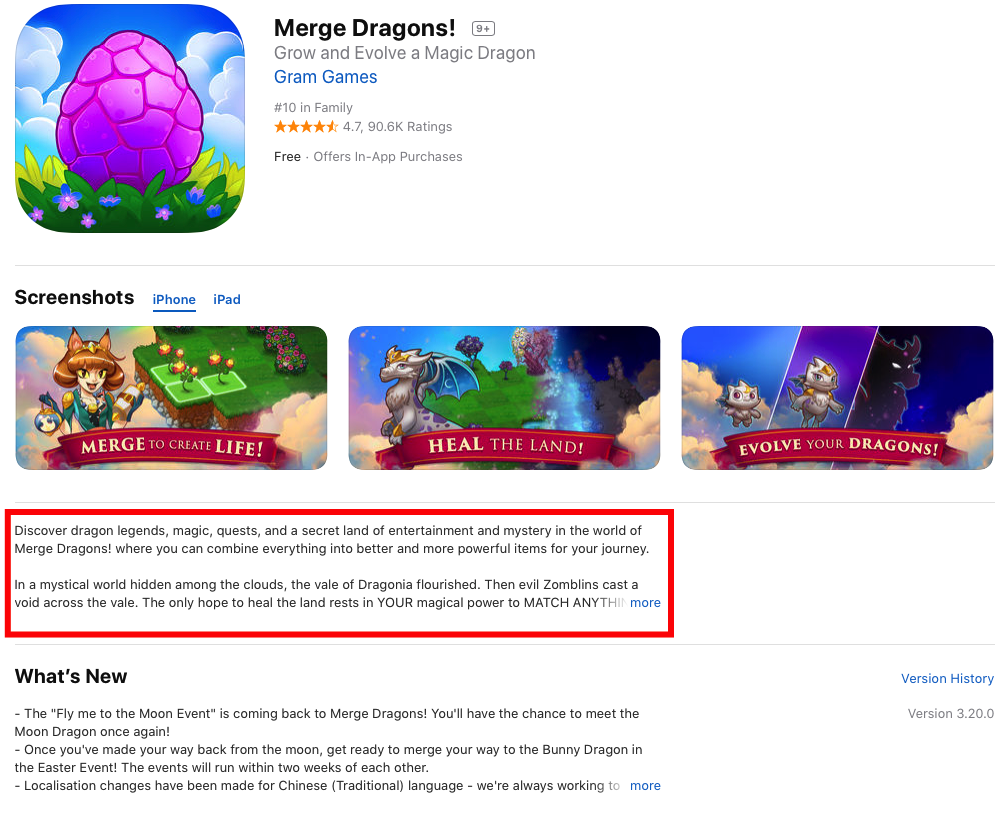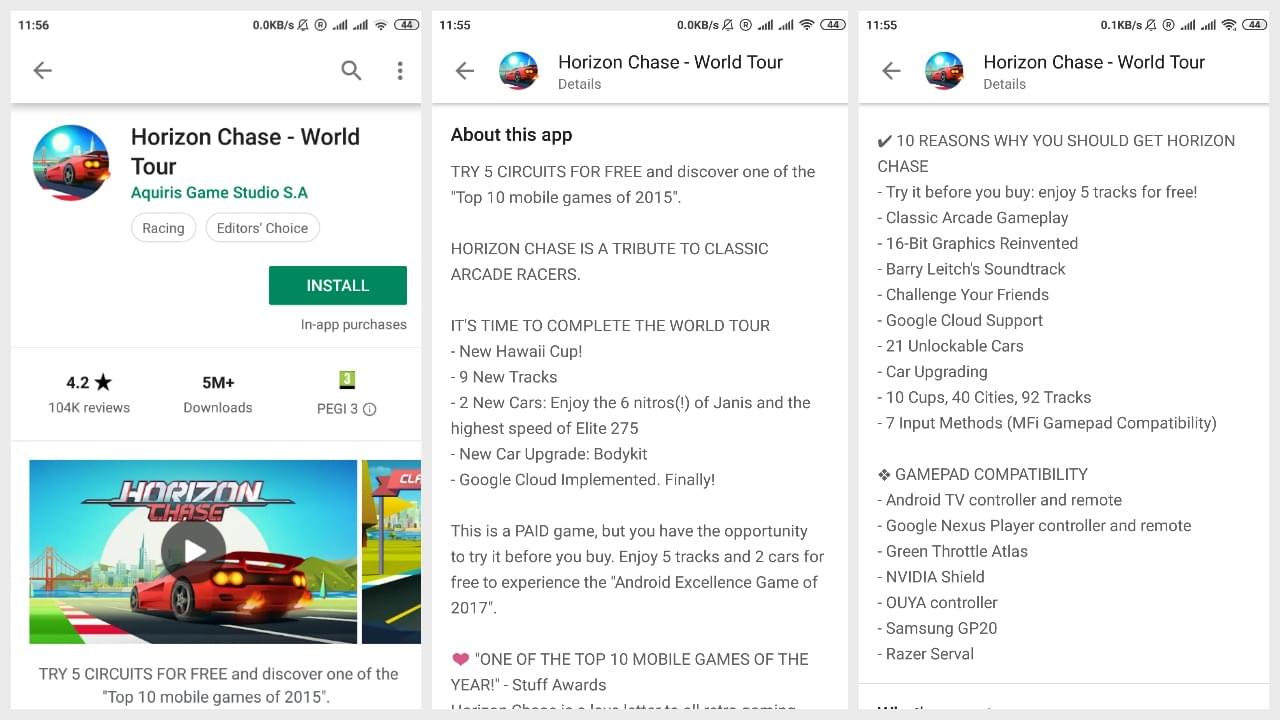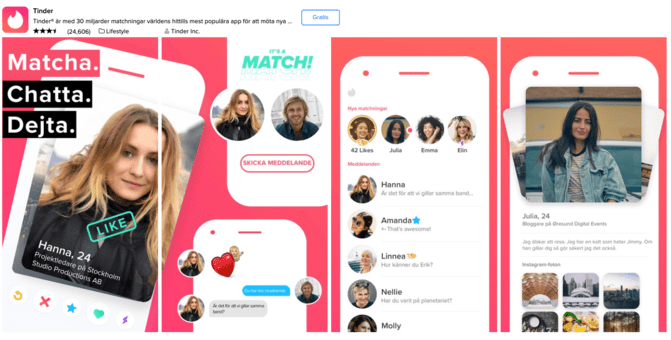Localize Direct: if it matters to you, it matters to us
When you’re an industry leader, it’s tempting to assume that you know what your customers think. Tempting, but still wrong.
You’ve worked hard to develop an app or game that people will find useful and enjoy using. But how do you stand out of a million-strong crowd? With a great app description, you’ll create a favorable impression & entice people to download your app. Use the Wrap-App Technique - and you’ll increase downloads immediately.
There are many. One is to localize your description and thereby reach more markets. But before doing this, you need to have the perfect app description to translate.
It’s obviously important to put a lot of effort into your app development, but when it’s time to release, you also have to think carefully about how you’re going to present it.
First impressions decide whether someone downloads your app or game or browses past to the next one. Potential customers read the app description. To help them decide whether your app is worth downloading your app description has to be enticing.
You might be concerned that you don’t know where to start. How do you craft a compelling app description that nails the essence of your app and persuades people to give it a try?
Don’t worry. I’ll walk you through the process. This simple step-by-step guide will show you exactly how to do it.
You may be wondering how to get started. Maybe you’re not a natural writer. Don’t leap straight into writing the description. Wait a few moments.
The first thing to do is to spend time using your app. You need to think about what a prospective user should know.
Then it’s time to grab a white paper and pen. Don’t use the blank paper to start writing your app description.
Instead, step back and ask yourself these 4 questions:
Write down your answers.
The answers to these questions will help you get into the right mindset to write a great app description. If it’s a game, then you need to add this set of questions:
Try to put yourself in the shoes of a potential customer.
Write down some notes and try to sort your observations into a rough order of importance. Keep the most important things you want to say at the top of the list.
As a developer, you’re going to be very close to your app, so close, in fact, that you may not be able to see the wood for the trees. That’s why it’s vital to get some other perspectives, ideally from people without a vested interest in the app’s success.
If you’ve already released your app, then you can draw on user reviews and feedback.
If you haven’t reached that stage, then start by asking friends and family, but remember that their attachment to you is likely to color their opinion.
You will find that other people find different things worthy of note and you’ll want to stir some of this feedback into your list. If a lot of people seem to be raving about a specific feature, or they all comment on a character or backdrop they liked in a game, then it’s probably something you want to work into the description.
This exercise might reinforce the list you’ve already drawn up, or it might prompt a re-ordering. Try not to let your personal feelings overrule the crowd. It is after all the crowd you’re selling to, not yourself.
This outside perspective is very important, which is why it might be better in some circumstances to hire an experienced writer or company to handle the app description for you.
Look at some of the most popular apps in the app stores and analyze their descriptions. You may even want to take a look at the apps or games you consider to be your biggest competitors. It’s important that your app description is unique, but you might find the odd word or a stylistic touch that appeals.
Compare the descriptions with your experience of the apps. How do they match up? This exercise could spark a few more ideas about how best to present your app. It could also spark some ideas for additional keywords that you want to use.
There’s one last thing to do before we delve into the writing process. The good app description isn’t just about persuading people to download your app. It can also boost your chances of appearing in the search results.
You’ll want to sprinkle important keywords into your description naturally.
Don’t be tempted to crowbar them in. Readers will be jarred by unnatural word insertions, but keep them in mind when you write.
In simple terms, you want to use words and phrases that people might type into a search box in order to find your app.
You could research using Google Trends or the Google Ads Keyword Planner. Even beginning to type terms into the search box in the Play Store and seeing the suggestions that pop up can give you some ideas about what people are looking for.

We’re not going to look at keywords or ASO in too much detail here, that’s a whole topic in itself. Read “Choosing the perfect keywords for your iOS app” to learn more.
By now, you should have a roughly prioritized list of things that you want to include in your app description and some important keywords. The Wrap-App Technique will help you pull them all together.
If someone is taking the time to stop and read your app description, then you have an opportunity to tell them why they should download it. You need to cut straight to the point.
Like an elevator pitch, you need to be succinct and persuasive, because you only have a short time to convince them.
For app landing pages in the app stores, there’s generally only a sentence or two displayed by default. Beyond that, potential customers will have to tap “More” to read on.
The biggest limitations are on the smallest screens, but the vast majority of people browse and download apps directly on their Android smartphones or iPhones.
The first sentence or two is the most important thing you will write.
That’s called promo text: it appears at the top of the description and is up to 170 characters long for iOS and just two lines long for Android.
The title and the screenshots should convey a general idea of what your app is about. You need to immediately appeal to the reader and tell them why your app is what they’re looking for.
There are a couple of tried and tested copywriting rules that you should bear in mind here:
KISS – Keep it simple stupid.
WIIFM – What’s in it for me?

You’ve crafted an enticing opening that paints a picture of what people can expect if they download your app, now you need to flesh it out. Explain all of the key features.
Apply newspaper rules and expand on the details of your app with the most important things first and the least important last, following your prioritized list.
If it’s going to do the job that you want, then your description has to read well. The text should flow naturally when you read it.
This is a good way to catch mistakes and awkward bits. If something feels off, or jarring, to you, then it will probably feel that way to any other reader. Trust that gut instinct and change it.
Don’t be tempted to exaggerate. Hyperbole will set unrealistic expectations and you’ll end up with bad reviews.
Be honest about your app and don’t try to hide things. For example, don’t advertise as free if you actually require a subscription.
Good to know: You don’t have to use all 4,000 characters. Some apps can be neatly summarized in three or four paragraphs; others will need more words to fully explain.
If you’ve included everything that was on your list and there’s room to spare, then finish with a final call to action (CTA). A quick recap and a last appeal to download your app can be effective. The important thing is to avoid writing on for the sake of it. Don’t pad your app description out to meet the limit.
Think about how the text looks on the page. You should take some time to organize your information in a digestible way.
No one likes a wall of text.
Another great way to present a lot of information in a few words and break up the look of the page is to use bullet point lists. Think about the following:
Most people will read the first couple of points in a list and then skip to the last one. If points look very similar, perhaps they start with the same first word or two, then people tend to merge them or skip them. If you have a lot of points that you want to cover then split them into two separate bullet point lists and divide them with a paragraph.
At the end of your app description, you might consider including testimonials and some relevant links.
Many developers include testimonials in their app descriptions and they can prove persuasive. If your app has won a prestigious award or received a glowing review from a well-respected website or reviewer, then it may be worth highlighting that and lifting a quote.
You have to think about the credibility of the source and the likely impact on the reader. Upon occasion, a review will sum up a feature or aspect of your app lyrically and concisely. Used properly, quotes can expand on your app description with important extra details or highlight the best bits neatly.

Horizon Chase’s description on Google Play: clear structure, bullet points, testimonials, and a disclaimer (paid game).
It can be a good idea to list some links to your social media accounts where prospective and existing customers can find more information, share thoughts about your app, and engage with you directly.
You should certainly include a link to your website and a support link where customers can ask you questions or explain problems (something you’d rather they didn’t do in the reviews).
Once you have an app description that you’re happy with, the cheapest and easiest way to get more mileage out of it is to localize it. Everyone prefers reading in their native language.
You could just take a look at the biggest markets in terms of numbers of downloads, or you can dig into some analysis on how much different markets spend and what genres they prefer. In any case, presenting your app in another language will boost your chances of getting a download.
When Common Sense Advisory surveyed 3,000 consumers from ten non-English speaking countries it found that 75% wanted products in their native language. In fact, 55% of respondents said they would only buy at websites where the information was presented in their language, a figure that rose to 80% for those with limited English.
Even if you haven’t fully localized your app, it can still be worth localizing your app description. The report found that over 50% said they would prefer at least navigation elements and some content appear in their language.

For the Swedish users, Tinder localized both app store description and screenshots
Just make sure that you engage a professional translation service (like LocalizeDirect if we are talking about games). A direct word-for-word translation is not going to convey the same nuance and carefully crafted appeal as your original description.
In any way, read Google Play’s localization checklist or The Going Global Playbook to find more details and market information.
The app description isn’t written in stone. You’ll want to update it regularly. Whenever you update the app or game, you should update the description to reflect the new changes.
You’ll also want to tweak it based on the feedback you get. If, for example, a lot of people post the same question in reviews and comments, then perhaps it’s worth addressing it in the description. You may also get a new review that you want to add to your testimonial section. Or perhaps you’ll think of a clever turn of phrase, or a better way of summing your app up. If you think of any improvement you could make, then go ahead and do it.
Every developer should put some energy into a great app description. If you’ve worked hard on your app, then don’t scrimp on the final presentation.
The Wrap-App Technique is all about showing your app off in the best possible light. Gather together all the compelling reasons to download it and wrap them up in a neat and enticing package.
In a nutshell, this is how to write an exciting App Store description:
When it’s done, polish it, and put a plan in place to localize it for more attention in other markets and for regular updates to keep it current.
The Wrap-App Technique is a relatively quick and easy way to boost your downloads. If you feel that your time is better spent on developing, or you’re not confident that you can make that description sing, then hire someone to do it for you.
When you’re an industry leader, it’s tempting to assume that you know what your customers think. Tempting, but still wrong.
Have you played a video game with verses or songs that were in your native language? Or are you a game developer working on this type of game and would like to adapt it to other languages? Translation of poems and songs may be one of the toughest challenges for translators. This article will share some tips on how to handle the transcreation process.
![How To Write A Great App Description With The Wrap-App Technique [+DIY Checklist]](/images/blog/great-app-description/image_0.png)